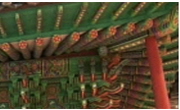목적: 본 연구는 서울시민 594명을 대상으로 중의체질표 설문지로 검사하여 체질유형 분포를 탐색하고, 체질 별로 오색(빨강색, 파랑색, 노랑색, 흰색 그리고 검정색)의 선호도를 조사하여 서...
http://chineseinput.net/에서 pinyin(병음)방식으로 중국어를 변환할 수 있습니다.
변환된 중국어를 복사하여 사용하시면 됩니다.
- 中文 을 입력하시려면 zhongwen을 입력하시고 space를누르시면됩니다.
- 北京 을 입력하시려면 beijing을 입력하시고 space를 누르시면 됩니다.

서울지역 주민의 중의(中醫) 체질(體質)별 오색(五色)선호도와의 연관성 = Relations of Five Color Preference with Chinese Body Constitution of Residents in Seoul Area
한글로보기https://www.riss.kr/link?id=A106637714
- 저자
- 발행기관
- 학술지명
- 권호사항
-
발행연도
2020
-
작성언어
-
-
주제어
Chinese constitution ; Yang-weak constitution ; Five color ; Preference ; Blue ; 중의체질 ; 양허체질 ; 오색 ; 선호도 ; 파랑색
-
등재정보
KCI등재후보
-
자료형태
학술저널
-
수록면
13-21(9쪽)
- DOI식별코드
- 제공처
-
0
상세조회 -
0
다운로드
부가정보
국문 초록 (Abstract)
목적: 본 연구는 서울시민 594명을 대상으로 중의체질표 설문지로 검사하여 체질유형 분포를 탐색하고, 체질 별로 오색(빨강색, 파랑색, 노랑색, 흰색 그리고 검정색)의 선호도를 조사하여 서울 시민들에게 적합한 검사인지 그리고 체질에 따른 오색의 선호도가 타당성이 있는지를 조사하는 것이 목적이었다. 방법: 연구방법은 중의체질 설문지를 이용하였고 일반오색을 이용하여 조사하였다. 결과: 체질유형 분포에서는 양허체질(31.4%), 음허체질(23.8%), 담습열(11.8%), 화평(10.4%), 기허체질(9.8%), 기울체질(7.4%), 특이체질(6.2%), 어혈체질(3.2%) 순으로 나타났다. 통계적 유의성은 없었다. 이는 중의체질 검사가 서울 시민에 적합하지 않다는 결과이기도 하다. 오색선호도 순서는 파랑색이 184명(31%), 노랑색이 150명(25.3%), 흰색이 107명(18%), 빨강색이 105명(17.7%), 그리고 검정색이 48명(8%)의 순이었다. 파랑색을 제일 선호하였고, 검정색을 제일 낮게 선호하였다. 오색의 분포는 차이는 있었으나, 통계적으로 유의하지는 안했다. 이는 체질별 오색선호 사이에는 유연성이 적다는 결과이다. 양허체질 대상자의 오장질환 중에 위장 질환자의 분포(50.3%)가 반수 이상을 차지하였다. 선호색은 전체적으로는 파랑색(30.9%)이 가장 높은 것으로 나타났다. 이러한 차이는 통계적으로 유의성이 있었다(p<.01). 오장질환 별로 오색의 선호도에 영향을 준다는 결과라 평가한다. 결론: 중의체질 분포조사표로 조사한 서울 시민의 체질을 분포는 9개로 분류되었으며, 양허체질 대상자가 수가 가장 높았고, 습열체질이 낮았다. 또한 체질별로 오색의선호도에 차이가 있었다. 그러나 통계적으로 유의성은 없었다. 이는 중의체질표가 서울시민에게는 적합하지 않다는 결과이기도 하다. 그러나 체질별 결과는 이 분야의 연구에 중요한 기초자료가 된다고 판단한다.
다국어 초록 (Multilingual Abstract)
Purpose: The purpose of this study examined the distribution of constitution(Con) types by examining the Chinese constitution table questionnaire with 594 Seoul citizens. It investigated the preferences of five colors by the Con. It then was to explor...
Purpose: The purpose of this study examined the distribution of constitution(Con) types by examining the Chinese constitution table questionnaire with 594 Seoul citizens. It investigated the preferences of five colors by the Con. It then was to explore the validity of the test and the five colors according to the Con. Methods: We used the CC table questionnaire and surveyed by using a cardinal color. Results: The Con type distributions include yangweak( 31.4%), yin-weak, gall-humidity, harmony, qi-weak, qi-gloom, specific, and extravasate in order. The lack of statistical significance also indicates that the CC test is not appropriate for Seoul citizens. The order of five preferences is 31% in blue, 25.3% in yellow, 18% in white, 17.7% in red, and 8% in black. Blue was the most preferred and black the least. There were differences in the distribution of five colors, but they were not statistically significant. In five viscera diseases of the yang-weak con, the stomach was more than half(50.3%). The highest preferred color was blue (30.9%). This difference was significant(p <.01). It evaluated that this influences the preference of five colors by five diseases. Conclusions: The constitution of Seoulian in the CC survey distributed into nine categories. There was a difference in preference of five colors by the con. However, it was not significant. This indicates that the Chinese con table is not suitable for Seoulian. However, the results are to be primary data for research in this field.
동일학술지(권/호) 다른 논문
-
두 발의 위치에 따른 체형검사 결과 차이와 체간신전 동작 이미지 검사의 유용성 연구
- 한국자연치유학회
- 장완성
- 2020
- KCI등재후보
-
원적외선에너지 방출 황토침구 사용 후의 자율신경 변화에 대한 연구
- 한국자연치유학회
- 이구연
- 2020
- KCI등재후보
-
반려견의 원적외선 에너지 방출 황토원단 방석에 대한 반응의 탐색
- 한국자연치유학회
- 이구연
- 2020
- KCI등재후보
-
- 한국자연치유학회
- 안지혜 ( Ji-hye Ahn )
- 2020
- KCI등재후보





 ScienceON
ScienceON eArticle
eArticle






